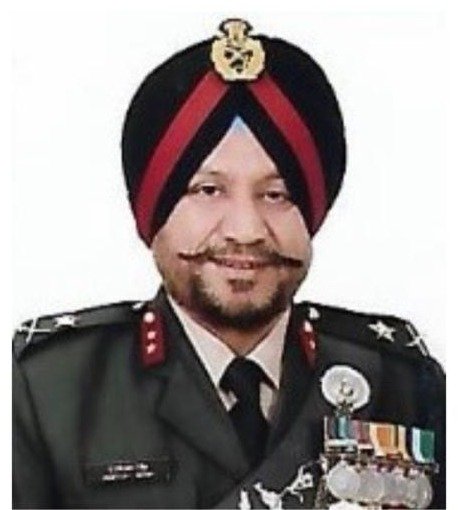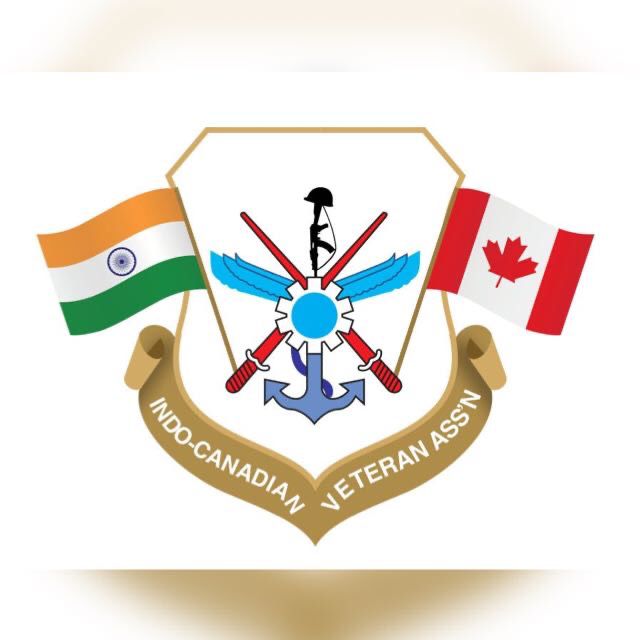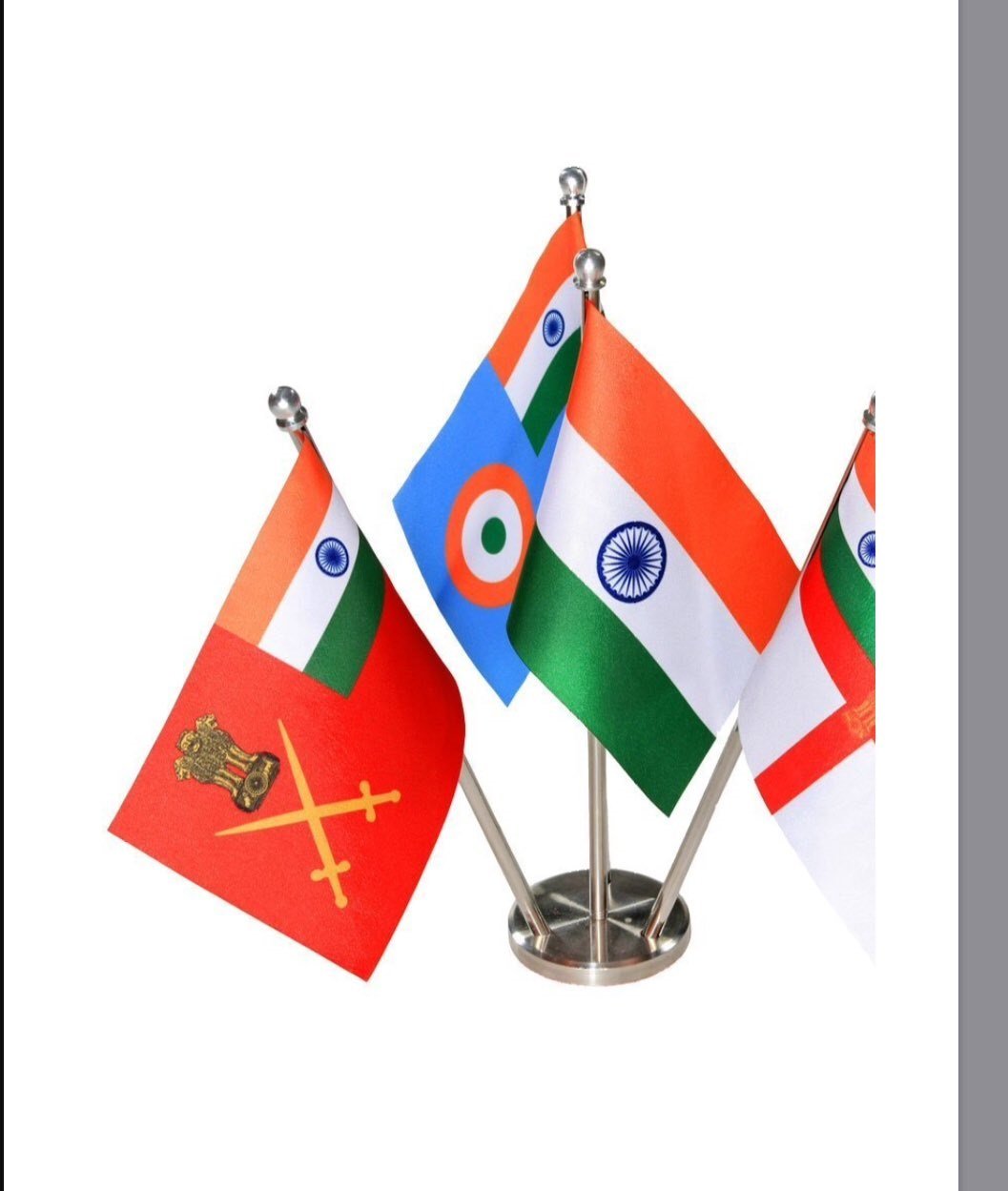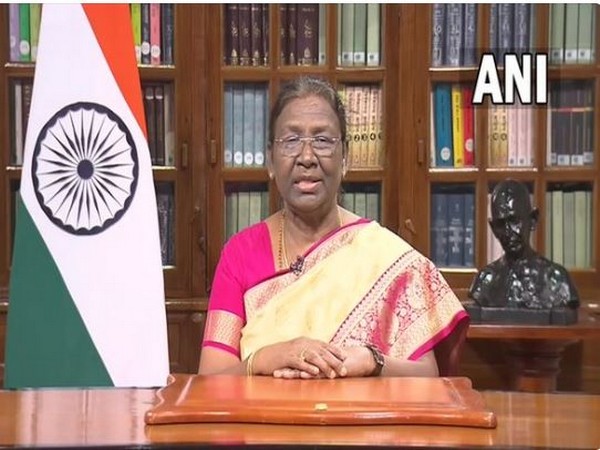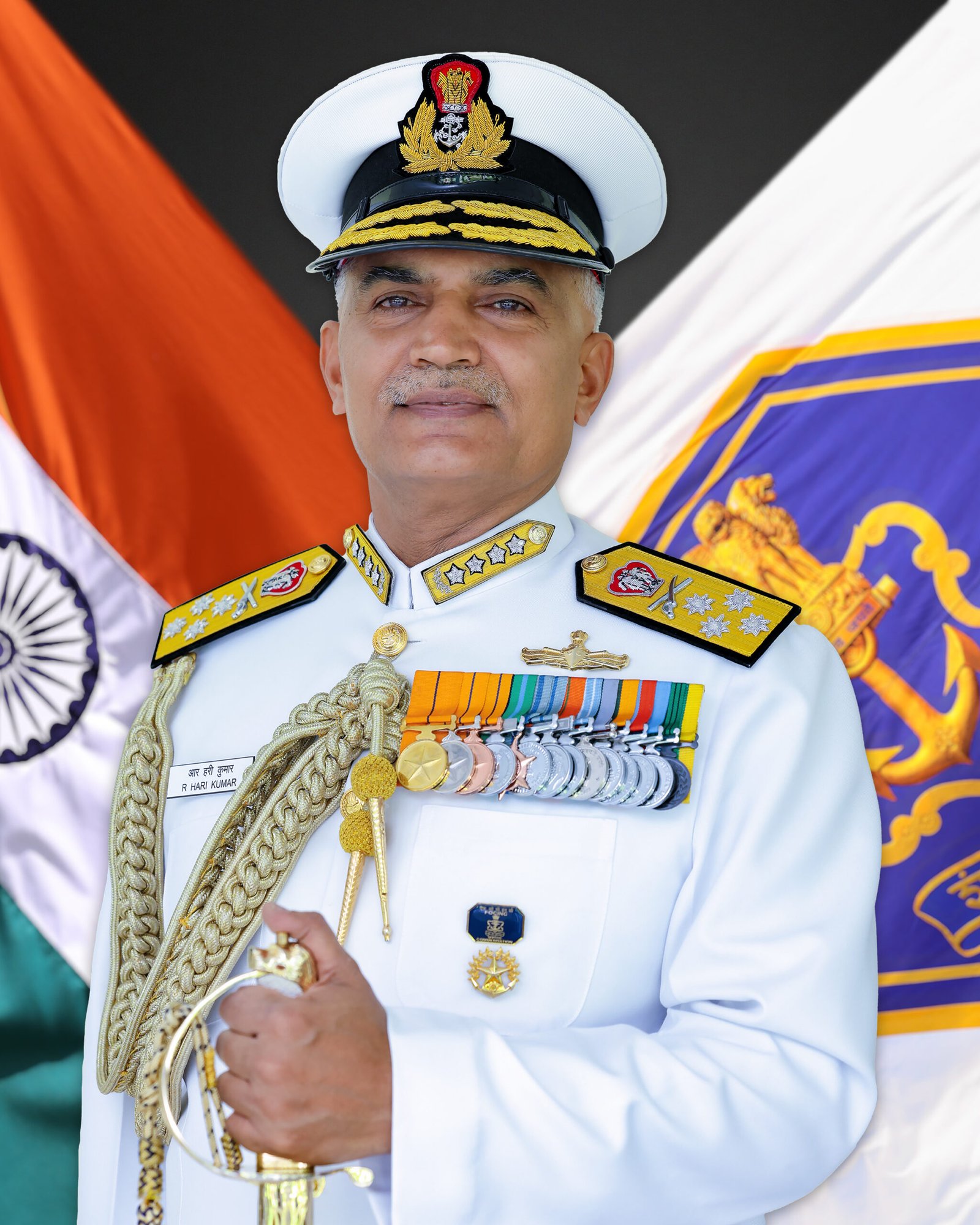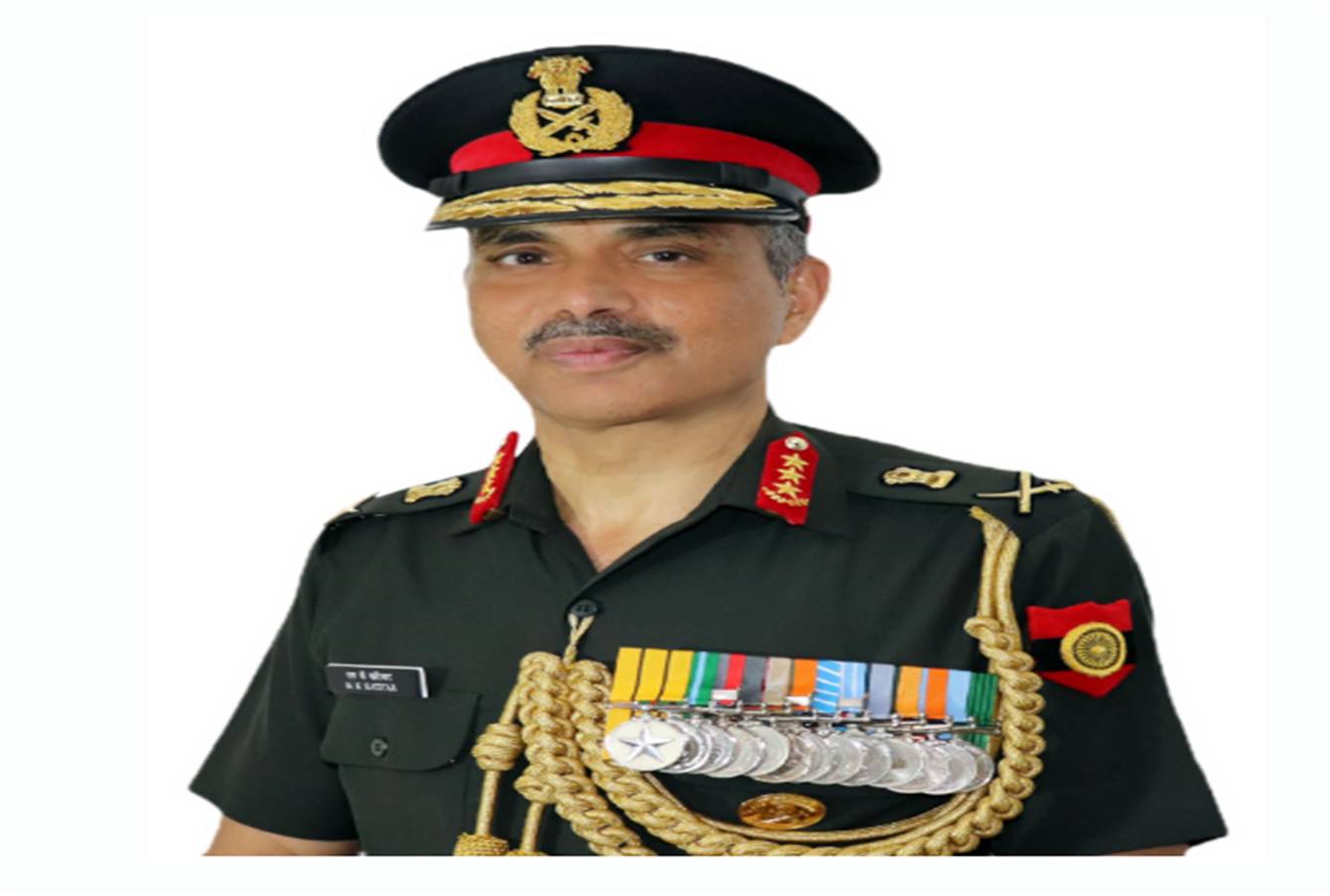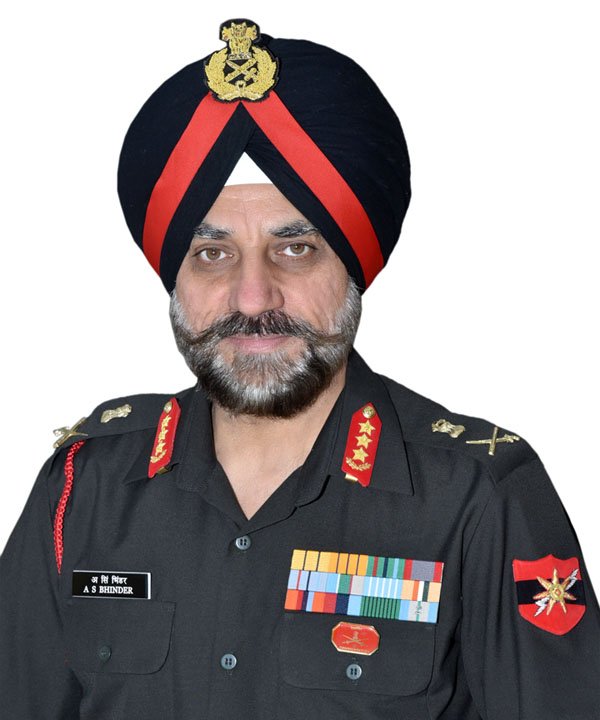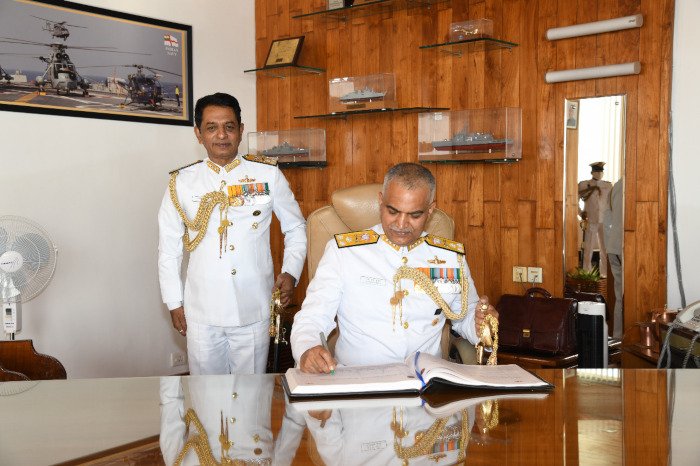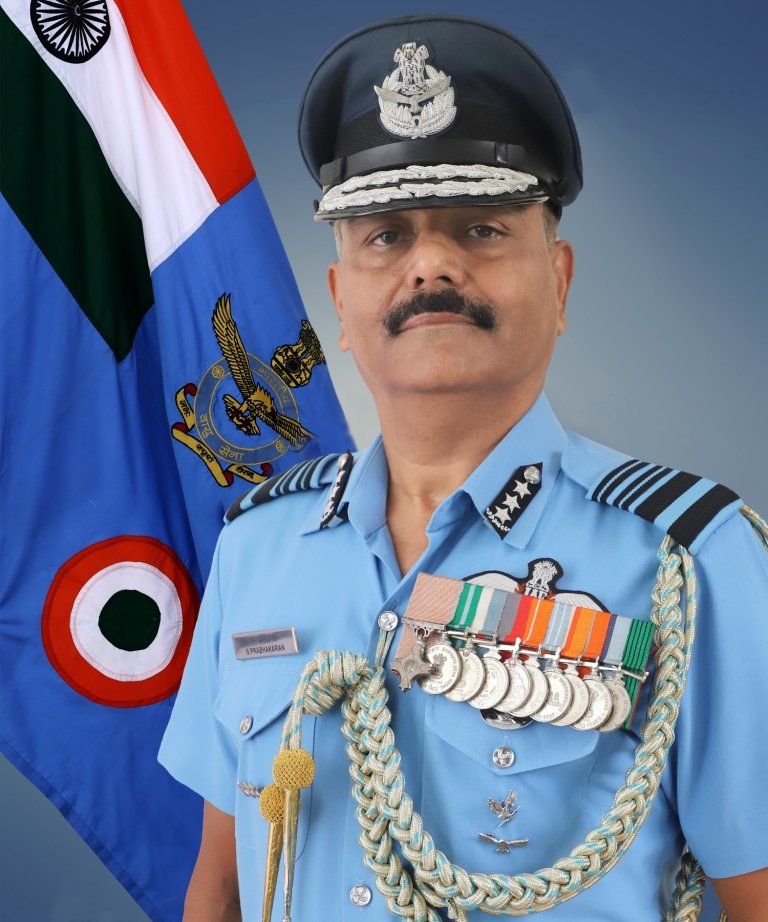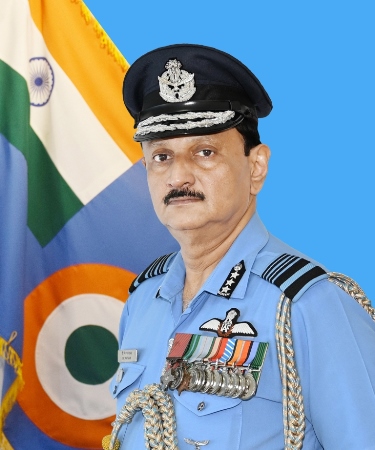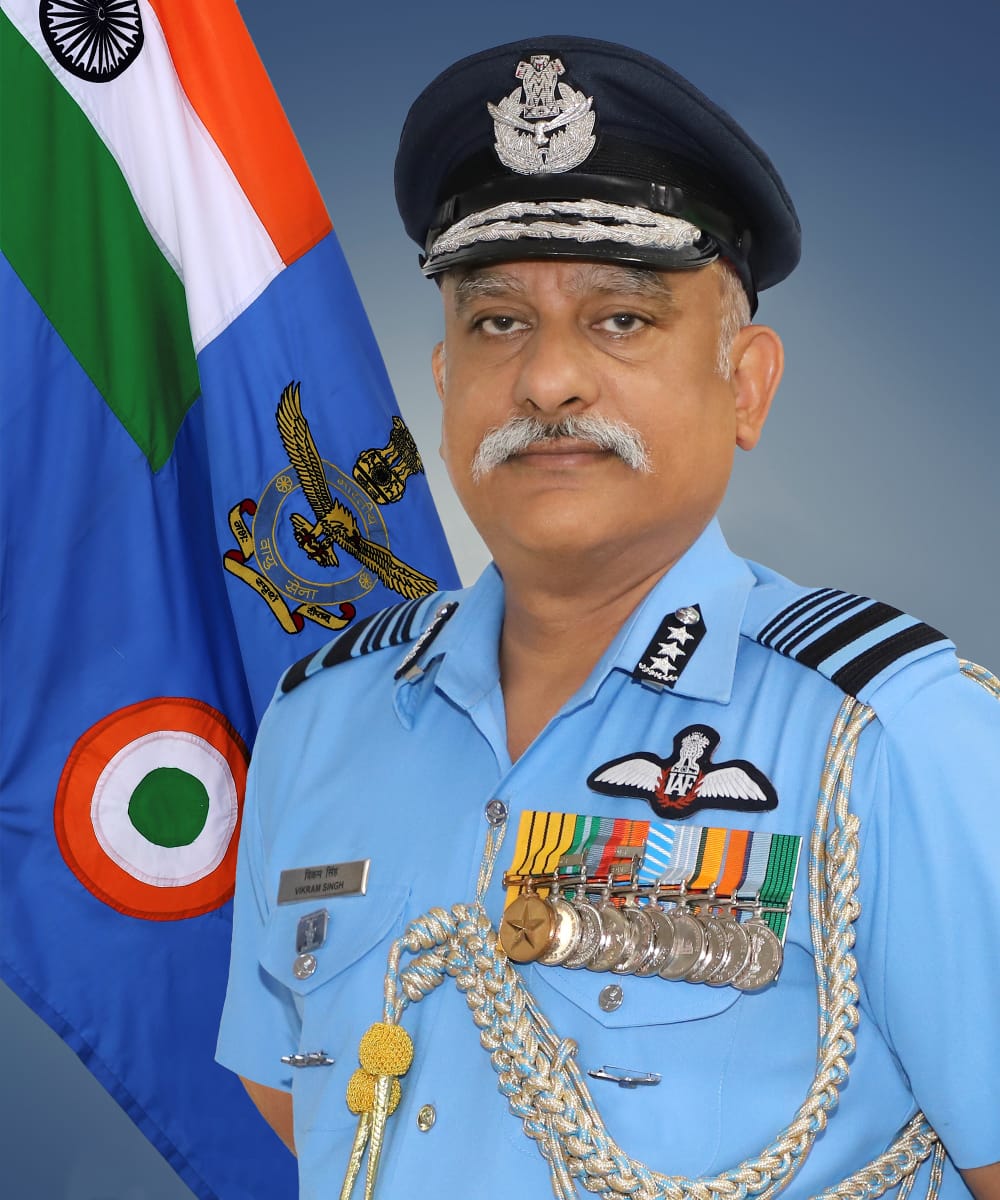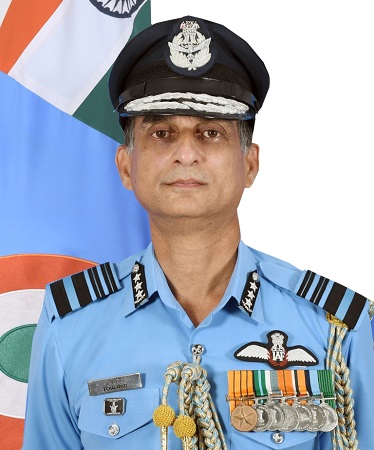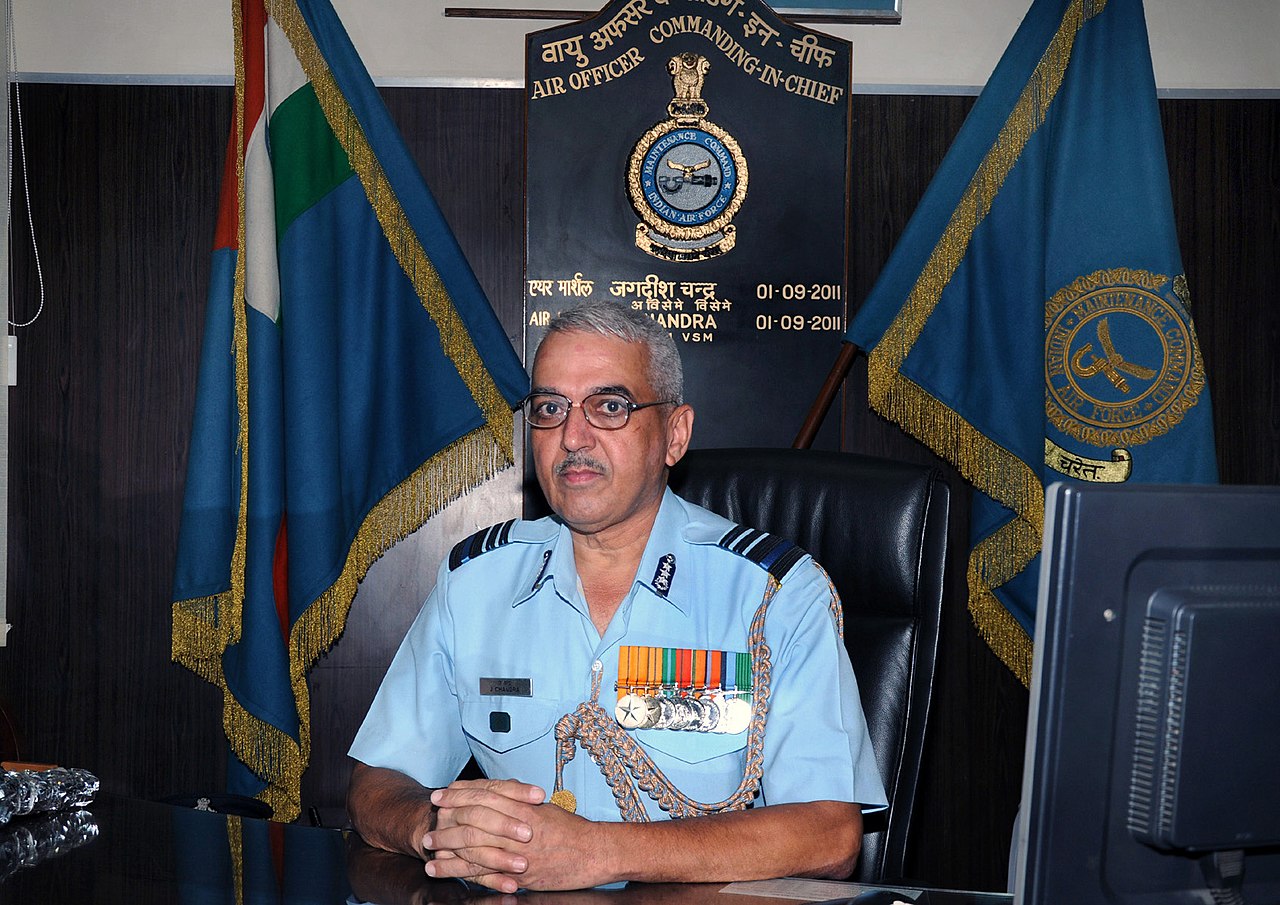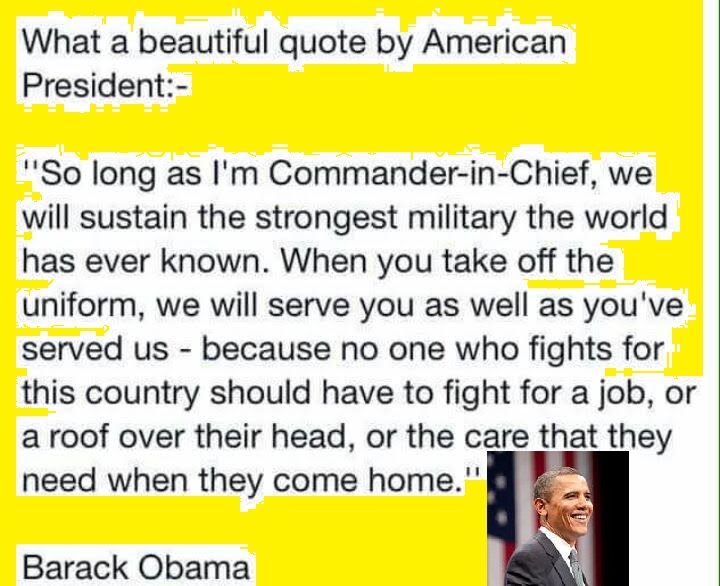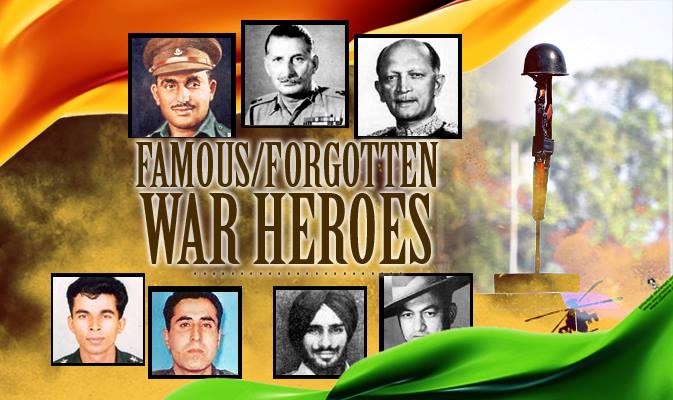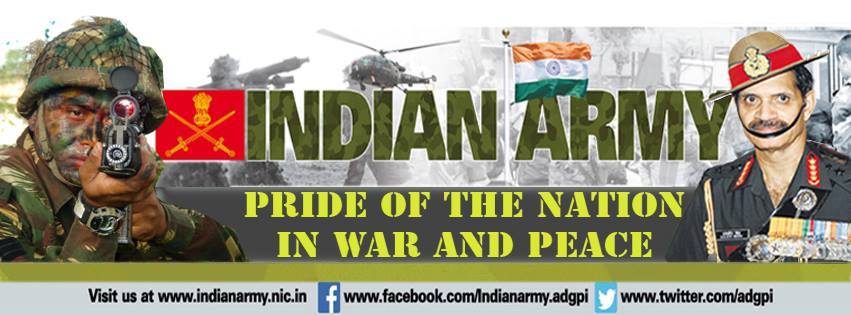
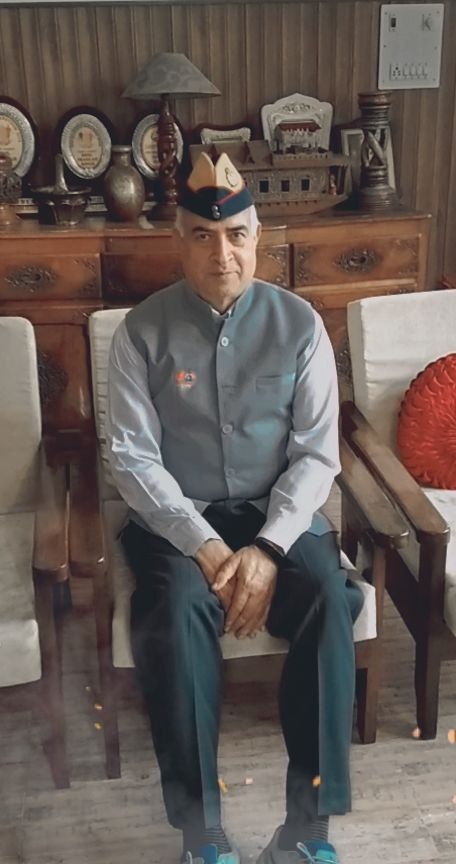





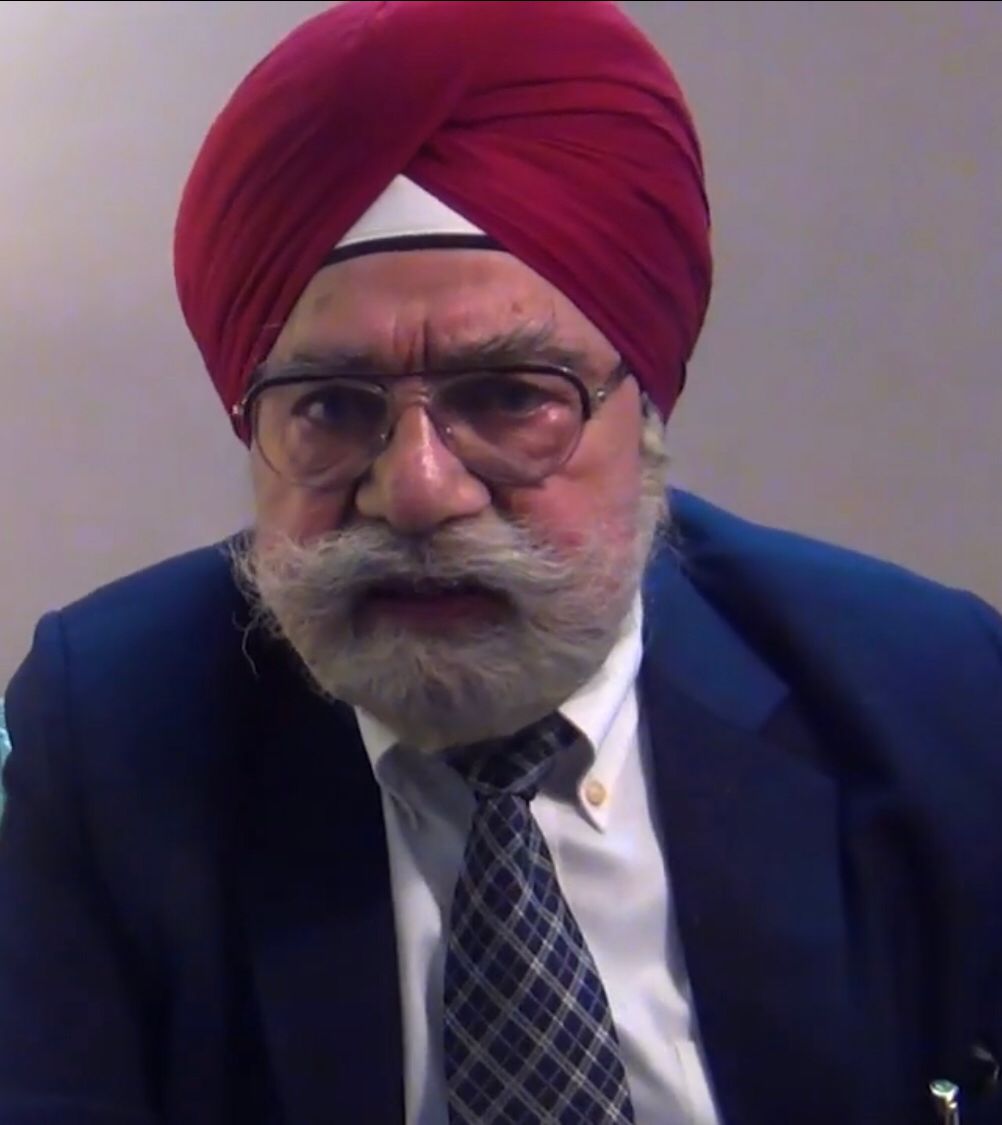


Indian Army releases a Video on the occasion of 40 years of “Operation Meghdoot” in the World’s Highest Battlefield Siachen Glacier in Ladakh
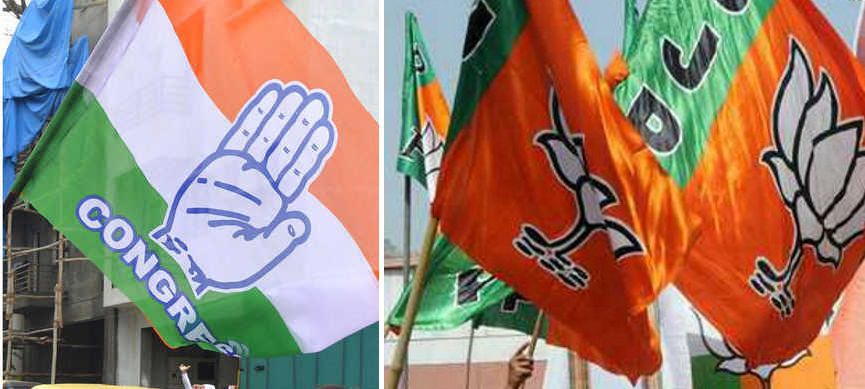
Ajay Banerjee
New Delhi, April 15
The Congress manifesto on security addressed the need for having a formal National Security Strategy. “So far, ad-hoc and personalised policymaking is being done,” the party document says, adding that the Congress would issue a comprehensive National Security Strategy.
Formal national security strategy
Boost to border infrastructure
1.BJP manifesto promises to expand India’s defence footprint and have theatre commands for the armed forces. T
2.The Congress mentioned “Chinese intrusions in Ladakh” and said they represented setbacks to the Indian national security. The manifesto blamed PM Narendra Modi for giving a clean chit to China that considerably “weakened our negotiating position”. “Despite 21 rounds of military-level talks, Chinese troops continue to occupy Indian territory and deny Indian forces access to 26 out of 65 patrolling points, equivalent to an area of 2,000 square km, in eastern Ladakh,” the docume
3. The BJP document promises “expanding Bharat’s defence footprint across strategic locations and partner with friendly countries”. The party said it would ensure robust infrastructure along borders. “We will accelerate development of robust infrastructure along the India-China, Indo-Pakistan and Indo-Myanmar borders,” party’s manifesto said.
4. The BJP said it had started constructing roads, railway, telecom towers, optical fibre cables and electricity networks in border areas.
5. The Congress manifesto does a deep dive on policy-making, saying the National Security Council and the office of the National Security Adviser will be brought under the oversight of a select committee of Parliament.
6. The Congress added that the Defence Minister’s “operational directive determines the Armed Forces’ war planning”. “The UPA government issued the last directive in 2009. The Congress will bring a new operational directive to deal with our current two-front (Pakistan and China) challenge, it party manifesto states.
7. “The Congress will institutionalise the process of appointing the Chief of Defence Staff to ensure transparency and military consensus,” it says.
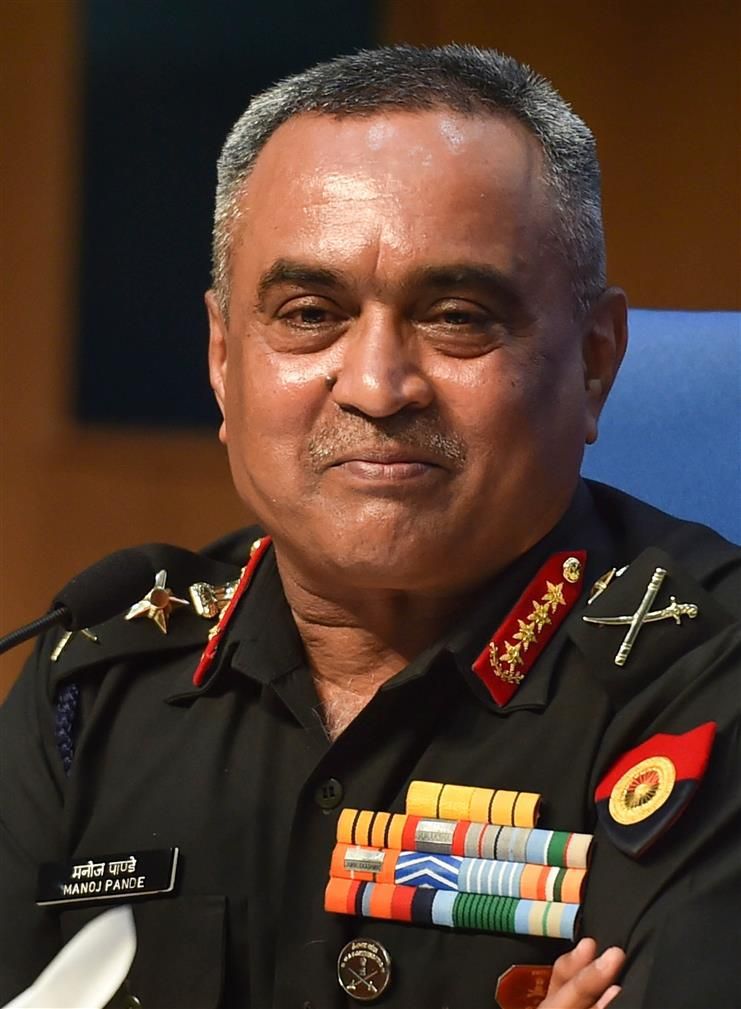
New Delhi, April 15
Army Chief Gen Manoj Pande today embarked on a three-day visit to Uzbekistan. Simultaneously, an armed forces contingent also left for a two-week joint exercise (April 15-28) — ‘Dustlik’ — with the Uzbek army.
General Pande will engage in dialogues with top defence leadership of Uzbekistan. Meetings are planned with Uzbekistan’s Defence Minister Lieutenant General Bakhodir Kurbanov, First Deputy Minister of Defence and Chief of the General Staff of the Armed Forces Major General Khalmukhamedov Shukhrat Gayratjanovich, and the Deputy Minister and Chief of Air and Air Defence Forces Major General Burkhanov Ahmed Jamalovich.
General Pande will pay homage to former PM Lal Bahadur Shastri, who died at Tashkent, Uzbekistan. He will also visit the Uzbekistan Armed Forces Academy and inaugurate an IT lab, which has been established with India’s assistance.
On April 18, the Army Chief is scheduled to witness ‘Dustlik’ at Termez. The drill is an annual feature and this is the fifth edition. The exercise aims to execute joint operations in mountainous as well as semi-urban terrain. It would focus on high degree of physical fitness, joint planning, joint tactical drills and basics of special arms skills.

New Delhi, April 15
External Affairs Minister S Jaishankar has said government representatives will soon meet 17 Indians who were aboard an Israel-linked merchant vessel seized by Iran for allegedly violating maritime rules.
Told Iran, Israel to calm down: EAM
It’s a crucial region as a large number of our ships pass through it… We have told both nations to calm down. S Jaishankar, EAM
“Yesterday night, I spoke to my Iranian counterpart (Hossein Amir-Abdollahian). I told him there are 17 crew members from India. We are making the point with the Iranian government that these people should be released,” Jaishankar said.
World urges Israel not to avenge attack
Not for escalation, but will defend Israel: US
Iran president to visit Pakistan on april 22
The Iranian military had seized the cargo ship with Israeli links near the Strait of Hormuz. “I’m getting some reports but I want our embassy people to actually go there and meet these people. That will be my first point of satisfaction,” he said.
“Secondly, I would absolutely press for the people to come back to India as quickly as we can and my Iranian counterpart was quite responsive. He said okay, I understand it. I will try and do something really good,” he added. Iran had seized MSC Aries on April 13 for “violating maritime laws”. The seizure took place in the Strait of Hormuz days after Israel bombed the Iranian consulate in Damascus on April 1.
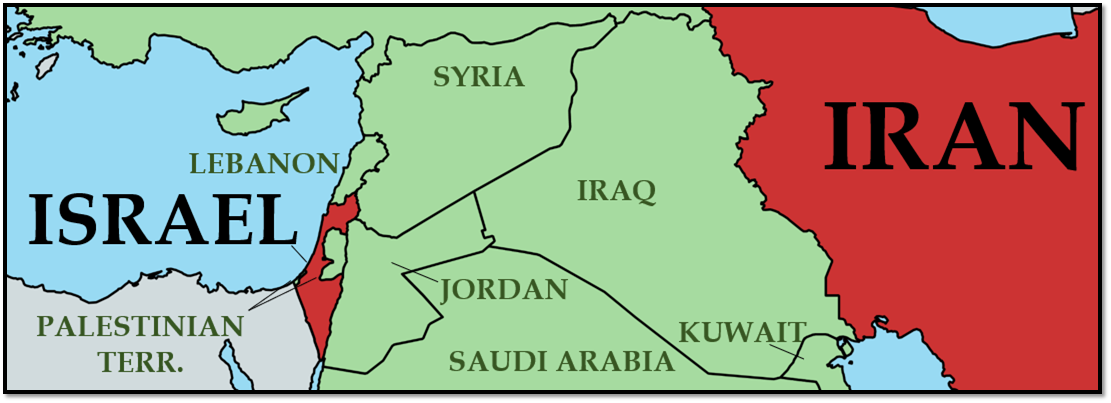
There is tremendous hype over the role of Drones, Ballistic and Cruise Missiles in W
There is tremendous hype over the role of Drones, Ballistic and Cruise Missiles in Warfare emerging from Battlefield
Ukraine, looking at the results there, rightly so. Maybe!!
On 13 Apr Iran launched more than 300 explosive drones and 10 ballistic missiles in Operation Va’de-ye Sadeq (True
Promise) – a significant attack by any account. Reported casualties and damage are however insignificant; the
difference (with Ukraine) – An Iron Clad Air Defence. Maybe !! Certainly yes.
99 Percent Iranian Drones, Missiles Intercepted: Israeli Military
Missiles and Drones Likely to Have Been Used by Iran:
• Drones: Shahed-136: Self-detonating Loitering Suicide Drones, Max Speed: 185 km/h, Guidance System: GNSS,
INS. Although slow, used in large numbers with a strategy to overwhelm the defence system. Shahed-107: A new
addition with similar capabilities.
• Missiles: Fateh-313 and Qiam missiles, short range ballistic missile. They were equipped with cluster warheads
which are difficult to intercept.
Israel’s Multilayered Air-Defence System: Long-Range Interception (The Arrow), Intermediate Interception (David’s
Sling and Patriot), Short-Range Interception (Iron Dome) and Very Short-Range Interception Systems.
• The Arrow: Outside the atmosphere hypersonic anti-ballistic missile. It can intercept ballistic missiles, including
ICBMs with nuclear, chemical, biological, or conventional warheads, during the space-flight portion of their
trajectory. Has a reported range of up to 2,400 km and can reach altitudes greater than 100 km.
• David’s Sling: Intercept a variety of aerial threats, including planes, drones, tactical ballistic missiles, medium- to
long-range rockets, and cruise missiles. Op Range: 40 to 300 km. Guidance System: AESA millimeter 3D radar
and dual electro-optical/imaging infrared (CCD/IIR) seeker for precise targeting. (designed to replace older
systems like the MIM-23 Hawk and MIM-104 Patriot).
• Patriot: now used to shoot down aircraft, including drones.
• Iron Dome: Intercept and destroy short-range rockets and artillery shells fired from distances of 4 to 70 km – a
remarkable success rate of intercepting over 90% of threats.
Lessons to Be Learnt
• Surprise: That these attacks were coming was known for days. Surprise remains the biggest winnable factor of
war. Same systems were not so effective during rocket attacks by Hamas on 7 Oct 2023.
• Size: Israel – a small compact country – 20,770 Sq kms. India with hostile neighbors (having ballistic missile and
drones’ capability) – 3,287,263 Sq km; threats will have to seriously wargammed for economy of effort.
• Intelligence, Surveillance, Target Acquisition and Kill: The distance of launch sites and heavy deployment of
American assets gave a fair warning and reasonable reaction time (a few mins, maybe lesser). India: not likely to
get this space, must develop a strong strategic deterrence to prevent even the thought of such an attack.
Strategic Deterrence:
• Requires credible military capability; demonstrating readiness (always) is as crucial.
• Targets the psychological, cognitive, and decision-making systems of enemy; fear of retaliation.
• Strategic Partners and International Collaboration makes the cost of an attack potentially higher due to the
involvement of multiple nations.
The Harsh Truth of Strategic Deterrence: Simply face painting does not scare an enemy.
By its actions, Iran defended its right to retaliate against Israel’s belligerence in attacking Iran’s embassy in Damascus.
Iran has said – It is over for now. Everyone would welcome that except Israel. The Million Dollar Ques therefore is;
Will Israel retaliate?
o I will say – Maybe NOT, except something against the proxies – in terms of conflict escalation that has
little significance
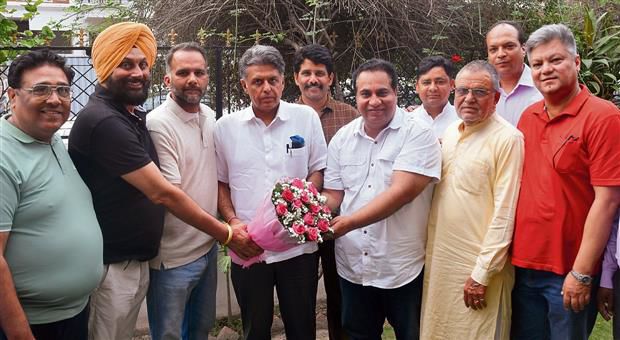
Sandeep Rana
Chandigarh, April 14
Congress candidate Manish Tewari today said he would take on his BJP opponent Sanjay Tandon over national issues with the support of “robust city Congress cadres” and INDIA bloc partner AAP.
“We have to understand it’s parliament poll, not MC election. This is a battle of soul of nation. A parliamentarian’s principal responsibility is to defend the Constitution. Local issues are important, but principally these are national elections,” he said while talking to Chandigarh Tribune, emphasising need to take up national matters in the run up to the June 1 poll.
He felt the way things were going on in India, it could be the last election of the country and the Constitution made by Dr Bhim Rao Ambedkar, whose birth anniversary falls today, would be repealed.
What issues he is going to raise during the elections, he said, “As a parliamentarian, he moved a Bill for a Rajya Sabha seat for Chandigarh and it also got overwhelming response from the local Municipal Corporation. He had also taken up the issue of privatisation of power department earlier. Besides, the governance model of the city needs to be revisited like division of power between the Municipal Corporation and the UT Administration. The Congress guarantees as per the manifesto will also be highlighted.”
His take On Tandon
On his fight with Tandon, who is also going to fight the election on national issues, Tewari said, “It is a battle of two completely different ideologies, narratives and worldview.” He said the city Congress was robust and along with the support of its INDIA bloc partner AAP, they would sail through.
Meanwhile, on his previous constituencies, the former Union minister posted on X, “I remain indebted to the good people of Ludhiana and Sri Anandpur Sahib whose love, affection and support will continue to sustain me. To them, I say my relationship with you is from dust to dust – ashes to ashes
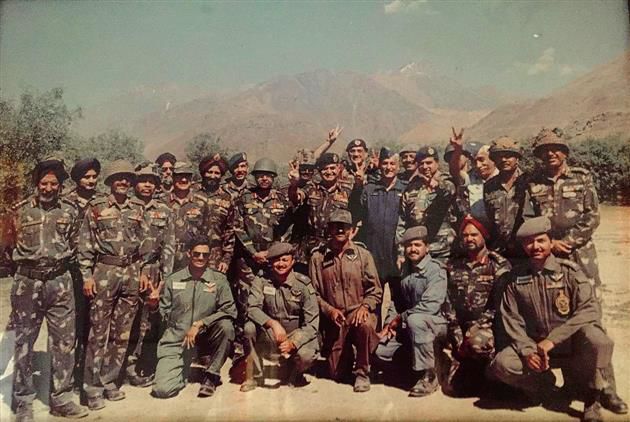

A quarter century has passed since Pakistan’s attempt to intrude across the Line of Control (LoC) to avenge its successive defeats at the hands of the Indian armed forces. The war in Kargil, fought in May-July 1999, was another effort by Pakistan to regain its honour after its humiliating defeat in 1971, which led to the dismemberment of that country, and was followed in 1984 by our occupation of the Siachen Glacier. In the late 1990s, Pakistan’s strategy of inflicting ‘a thousand cuts’ on India was not producing the desired results. The situation in the Kashmir valley had stabilised. The Army had brought insurgency under reasonable control for the Central Government to hold elections in Jammu and Kashmir in 1996 and instal an elected government. In this backdrop, Pakistan launched its operations by intruding into the Mushkoh-Drass-Kargil-Batalik sectors, over a frontage of approximately 130 km, in areas where both sides traditionally used to vacate their posts during the winter months and reoccupy them once the snow melted. While Pakistan’s political aim was to bring back the Kashmir issue on the world stage, its military aim was to isolate Ladakh and secure maximum territory with a view to changing the alignment of the LoC.
As the local unit sent out patrols, it became evident that several places had been intruded into by the enemy. It was also apparent that undetected intrusions were an intelligence failure.
I had the honour and privilege of commanding the 8 Mountain Division in the Valley and on the outbreak of hostilities in the Drass-Mushkoh sector. In early May, the battalion in Batalik received information from a local grazier of suspicious movement in the sector, which perhaps was not given the attention it deserved. As the local formation sent out patrols, it gradually became evident that a number of places had been intruded into by the enemy; yet, there was no clarity on the identity of the intruders and it was apparent that the undetected intrusions were an intelligence failure. However, the ferocity and speed with which the Army responded surprised Pakistan and disrupted its plans of consolidating the initial gains.
I was ordered to assume operational responsibility of the Drass-Mushkoh sector on June 1 and immediately set into motion preparations for our first attack. As the battalions got inducted from the Valley, they were given time to reorient their battle drills and procedures from counter-insurgency operations to conventional warfare, carry out advanced stages of acclimatisation and a recce of their nominated objectives. Meanwhile, the artillery, both integral and reinforced, was getting inducted and preparations for their gun positions and dumping of ammunition were in full swing. Having considered our pace of buildup and level of preparation, I decided to launch the first attack on Tololing on the night of June 12/13 with 2 Rajputana Rifles, with two companies of 18 Grenadiers providing the firm base, while the balance of the battalion was employed as reserve.
As one crosses Zoji La, one is awestruck by the terrain which tactically favours the defender and puts the attacker at serious disadvantage. The conduct of military operations demands proper acclimatisation, clothing to survive in the extreme cold climates and high levels of physical fitness. For a well-planned attack, the approaches are narrow, restricted and arduous, the going is uphill and the attacking troops, as a consequence, are likely to suffer heavy casualties. The momentum of the attack is slow and the high altitude and rarefied atmosphere add to the toll on troops and equipment. The limitation of movement along only one available major road axis also creates several tactical and logistic problems. The induction of troops as reinforcements or reserves, the availability of limited areas for the deployment of guns and their movement, and constraints on logistics are some of the major issues which need to be factored in while evolving any operational plan.
As scheduled, 2 Rajputana Rifles commenced its attack at 8:30 pm with massive artillery support, and since this was the first coordinated attack by the division, the atmosphere was extremely tense. The attack progressed satisfactorily, and by the first light, we had the better part of Tololing in control, except the top, which was holding out. The commanding officer, Col MB Ravindranath, an intrepid leader, saw a weakness in the enemy’s defences, and in a daylight assault, cleared the remnants, to our immense joy. With our victory at Tololing, the battle of the ridges commenced as we successfully went ‘ridge-hopping’ to restore the sanctity of the LoC and the honour and pride of the Army as well as the country. Every battalion was launched with the effective support of the artillery and combat engineers, fully backed by communications and logistics. All, without exception, met with success in accomplishing their task.
The Kargil War was a saga of bravery, raw courage, discipline and sacrifice by young officers and men, many of whom laid down their lives so that we could live a life of honour and dignity. While the courage displayed by Capt Vikram Batra and Capt Manoj Pandey, along with now Grenadier (later Honorary Captain) Yogendra Singh Yadav and Rifleman (later Subedar Major) Sanjay Kumar, all recipients of the Param Vir Chakra, is part of folklore, there are numerous untold stories of the courage and determination displayed by young officers and men in bringing victory to the country.
We had a heavy toll of casualties, losing 559 men in the operations. On the 25th anniversary of the war, it is to these bravehearts that we pay homage and remember their sacrifice for the country. We also need to recognise the sacrifices made by the Veer Naris, many of whom were widowed days after their marriage, in having lived a life of dignity and brought up their children as worthy citizens of the country.
The author commanded 8 Mountain Division during the Kargil War

Present jackets are stated to be fluffy, bulky and difficult for the aircrew to wear while flying
New Delhi: Indian Air Force helicopter crew deployed in counter-terrorist environment and internal security duties will get new bulletproof jackets that are lighter and more comfortable to wear while flying than the existing variants.
The IAF has approached the industry to design bulletproof jackets that, while being lighter, provide adequate protection to the aircrew from small arms fire during flying as well as combat survival on ground.
The present jackets, which weigh 6.5 kg, are stated to be fluffy, bulky and difficult for the aircrew to wear while flying. In addition, they have to wear a separate tactical vest over the jacket to carry ammunition and survival gear.
The IAF’s requirement is for a jacket whose weight does not exceed 4 kg during flying and 8 kg during combat survival and offers Level 3+ ballistic protection using a combination of hard armour panels (HAP) and soft armour panels (SAP).
Level 3+ category offers protection against different types of bullets fired from 7.62 mm rifles, including AK-47, at ranges as close as 25 meters. Each member deployed in such operations would be authorised a bulletproof jacket.
While deployed in anti-terrorist operations and internal security duties such as anti-Naxal operations, helicopters as well as the aircrew, including pilots and on board specialists such as flight gunners, load masters, medics, are exposed to risk from ground fire. The IAF regularly operates in such environments.
The jacket would have two components – an inner jacket offering front and side protection that would be worn while flying and an outer shell, with storage pockets and all-round torso protection, to be worn over the inner during combat survival in case the helicopter is brought on ground.
In addition to be suitable for Indian climatic conditions, the design of the jacket would be such that it does not hinder the mobility of aircrew while flying and provide adequate manoeuvrability during combat survival, as well as have flame retardant properties.
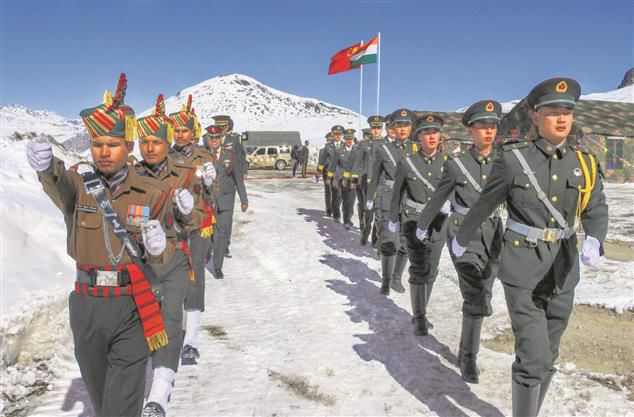

Discourse and narrative are critical elements in the shaping of the national security perception and related policy. Governments, whether liberal democracies or authoritarian regimes, accord considerable attention to these two strands in the evolution of national posture and policies. Both the US and China are examples of this practice.
China remains the abiding and heightened security and strategic challenge for India after the 2020 Galwan ‘shock’ administered by the PLA (People’s Liberation Army). It is instructive how this issue is being packaged in India in the run-up to the General Election.
In a recent interview with a US news magazine, Newsweek, PM Modi made a cautiously worded response to a question about the India-China border standoff. He noted: “For India, the relationship with China is important and significant. It is my belief that we need to urgently address the prolonged situation on our borders so that the abnormality in our bilateral interactions can be put behind us. Stable and peaceful relations between India and China are important for not just our two countries but the entire region and the world. I hope and believe that through positive and constructive bilateral engagement at the diplomatic and military levels, we will be able to restore and sustain peace and tranquillity in our borders.”
The operative phrases here are the reference to ‘abnormality’ in bilateral relations and the need to “urgently address the prolonged situation on our borders”. This response by the PM did not go into any operational detail, and the conciliatory tenor may be seen as a signal for what could be a more definitive China policy during PM Modi’s potential third term.
When the Galwan incident took place in the summer of 2020 and India lost a colonel (the CO of the battalion) and 20 other personnel, the PM’s initial assertion was that “no one has intruded into our territory”. This statement was later clarified by the PMO in a less than transparent manner — and it was evident that the dominant narrative at the time was to obfuscate the issue. Both India and China have kept the details about what transpired at Galwan under wraps and much of what is deliberated upon is based largely on conjecture.
On the Indian side, no substantive debate took place on this issue in Parliament. Over the past four years, Galwan has remained on the national back burner. Domain experts have been quoted on the subject and there is a guarded consensus that India has forfeited patrolling rights in certain areas of that part of the Ladakh region.
In recent months, External Affairs Minister (EAM) S Jaishankar, to his credit, has placed the Galwan issue in an appropriate perspective. Speaking in late March to the Indian diaspora in Malaysia, the EAM noted: “The India-China relationship is difficult. For reasons which are still not clear to us, the boundary agreements were broken by China in 2020. We actually had violence and bloodshed.” The onus for restoring normalcy at the LAC (Line of Actual Control) has been placed on China, even as numerous rounds of talks have not led to a resolution of the stalemate.
Against this backdrop, Home Minister Amit Shah also weighed in on the China challenge in an election rally in Assam on April 9 and accused then PM Nehru of ‘abandoning’ Assam in October 1962. This kind of vitriol is par for the course in election rallies and the BJP has consistently pilloried the Congress for the China debacle. Shah also asserted that China could not encroach upon a ‘single inch’ of Indian land during Modi’s rule.
While this may be seen as a case of projecting the Modi government as being more effective in safeguarding India’s sovereignty and territorial integrity, this is counterfactual and also at variance with what PM Modi and the EAM have maintained regarding the Galwan disruption to normalcy in the India-China bilateral relationship.
Adherence to an appropriate narrative template regarding sensitive national security matters by top ministers is the normative practice, and this has been particularly relevant in relation to China and the nuclear issue since the days of then PM Indira Gandhi.
When India conducted the Shakti nuclear tests in May 1998 under PM Vajpayee’s stewardship, some BJP leaders referred to this nascent nuclear weapon capability as a ‘Hindu bomb’. This characterisation was counter-productive to the Vajpayee projection that the Indian nuclear capability was anchored in NFU (no first use) and the principles of pristine deterrence, and a religious tag was undesirable.
This matter was relayed to then NSA Brajesh Mishra. Despite the enormity of dealing with the fallout of May 11, 1998, the PMO was able to issue a quiet directive to avoid religious terminology, and this was complied with by the principal actors at the time.
Amid the current election campaigning, there is a compelling case for evolving a narrative template in relation to the Galwan incident. The CCS (Cabinet Committee on Security) would be the appropriate forum for the purpose. In the prevailing environment, Galwan has become a bitterly contested issue between the BJP and the Congress and many intemperate statements are being made in an acrimonious manner. This is undesirable and will vitiate an already tangled bilateral dispute.
China has identified media warfare as one of the Three Principles of Warfare in its composite security strategy and has accorded this element high priority in its domestic and external information campaigns. In June 2020, the Chinese information ecosystem exploited PM Modi’s initial statement about ‘no intrusion’ to the hilt and sought to project the PLA as the victim of Indian perfidy in Galwan.
Indian mandarins and China watchers are no strangers to Beijing’s penchant for diplomatic duplicity and geopolitical intransigence. This goes back to the Nehru-Mao-Zhou Enlai era. There are many lessons from the Nehru-Krishna Menon handling of the information and narrative domain in the run-up to the October 1962 debacle that Modi’s team can benefit from while addressing China in this bitterly animated poll season.
As Admiral Arun Prakash, former naval chief, has cautioned, “Sacrificing clarity and a cohesive approach in foreign policy on the altar of domestic politics could cost India dear.”

